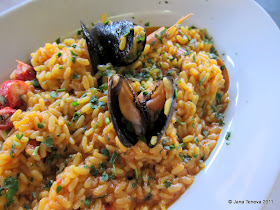
The center of the Bavarian capital is extremely rich on fountains...and there are all kinds, majestic and big ones, tiny but artistic ones, simple and impressive: there is something for every taste! With my pictures I would like to give you a short digital tour to those which I liked most:-)

On the eastern side of the square near the Neues Rathaus sits the Fischbrunnen (Fish Fountain). It's Munich's most famous and oldest fountain - some believe it goes back as early as the 1300s. Fishmongers kept their fish fresh in the fountain when this was the piscatorial part of the old market. It was the site of bizarre initiation ceremony called the Metzgersprung (Butcher's Leap) which took place regularly until 1900 and continues in an altered form to this day.

Apparently animals (and fishes) are very loved subject as I have found (not even 50 m from Hofbräuhaus) the fountain with the wolves heads...On the way to the Residenz, on the Marstallplatz one may admire the fountain on picture five...














































